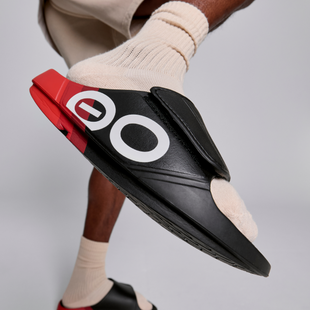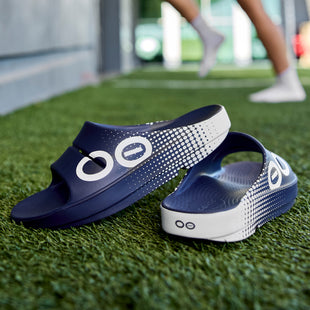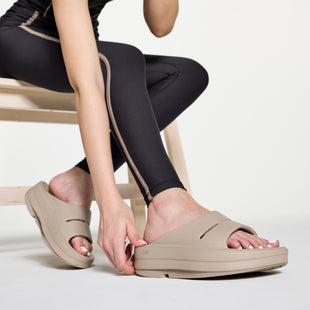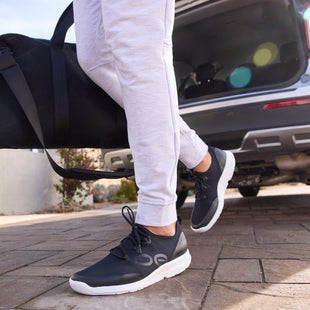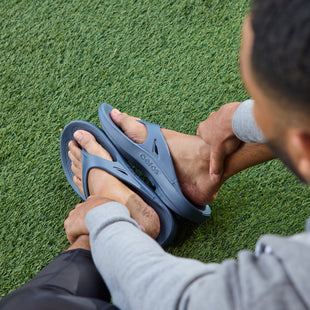There’s no one-size-fits-all answer. Your recovery timeline depends on your experience level, your race effort, and how well you’ve looked after yourself in the days following the event. That said, a sensible week-by-week guide can help shape your return.
Week one: full rest and gentle movement
In the first seven days after the marathon, running should be off the table. Even if you feel capable, your body is still repairing itself below the surface. Focus on sleep, hydration, and nutrition. Go for short walks to keep your body moving, ideally in comfortable, supportive footwear that helps relieve pressure on tired feet.
A pair of recovery shoes like OOFOS can make these walks more manageable. The cushioning reduces impact on joints and helps encourage circulation – both essential for recovery in the early days.
Week two: low-impact activity
If your legs are feeling better, this is the time to reintroduce light movement. Swimming, cycling or short walks are great ways to stay active without overloading muscles and joints. Some runners start adding very gentle jogs into the week, but keep them short and relaxed – think recovery, not training.
Listen closely to your body. Any sign of soreness or fatigue is a signal to back off.
Week three and beyond: a cautious return
By the third or fourth week, most runners can begin reintroducing short, easy runs. Avoid speed work or long distances. The focus should be on enjoyment and checking in with how your body responds. Each runner will progress at their own pace – it’s about patience, not comparison.
If you’re unsure whether you’re ready, ask yourself how your body has felt doing everyday activities. If stairs, walking or standing still bring discomfort, you’re not there yet.
Long-term recovery starts with smart choices
Getting back to running should feel good – not forced. Rushing the return often leads to setbacks that take even longer to fix. Use this period as a chance to rebuild with intention. Take rest seriously, fuel your body well, and stay consistent with gentle movement.
And don’t underestimate the value of the right footwear during this transition. Whether you’re walking, running errands or heading out for your first post-race jog, wearing something that supports recovery can make a difference.
You’ve done the hard work. Give your body the time – and the tools – to come back even stronger.


